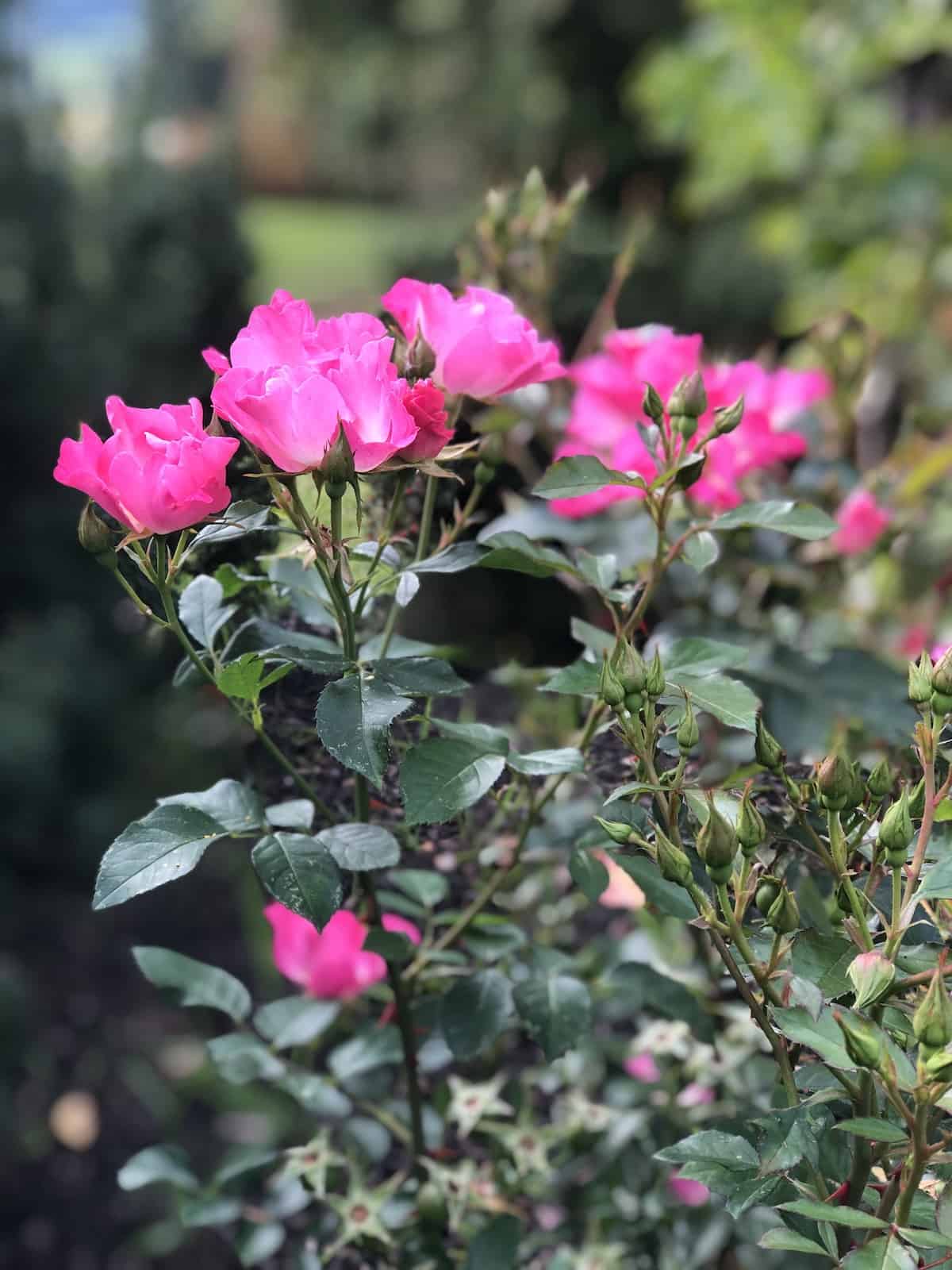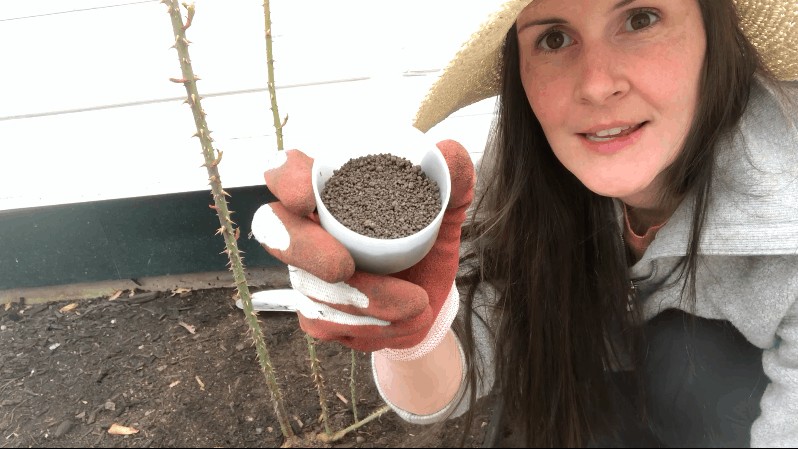Fertilizing roses in spring is a key part of spring rose care. Apply high-quality, slow-release, organic plant food to your roses before they bloom to help them put on their best spring show in your garden. Here’s everything you need to know about fertilizing roses in the spring.
Fertilizing roses in spring
Spring is THE time for fertilizing roses. The spring pre-flower feeding is the main time to focus on fertilizing rose plants. The pre-flowering feed in March/April is perhaps the most important feed for the plant’s overall health. Rose plants are hungry after a long, cold winter and need nutrient input to muster up their best spring blooms.
Many rose gardeners feed their roses twice each year – once at the beginning of the growing season (early spring) and then again in the mid-late summer after the first spring bloom cycle. This is especially true for repeat-flowering types of roses (including many modern types). Roses that only flower once per year generally need only one spring feeding.
“We always recommend feeding newly planted and established roses twice a year – at the beginning of the growing season (mid-March to April) and again in mid-summer after the first flush of flowers.”
David Austin English Roses
The second feeding (after the spring bloom flush) is most helpful for encouraging repeat-flowering types to continue to bloom throughout the summertime. The timing of this second feeding usually occurs in July-August, although every year is different. Most roses don’t need to be fed in the fall (although a top-dressing of homemade compost can be reassuring).
Tip: Both shrub roses and climbing roses can be fed in spring.

Rose fertilizers for spring feeding
Choose a slow-release organic fertilizer that has been formulated for roses and/or woody shrubs. Common raw nutrient sources for packaged rose fertilizer include natural materials like seaweed, alfalfa, and rock dust. Here are some great plant food options for fertilizing roses in spring:
- Jobe’s Organic Knock-Out Rose Plant Food Fertilizer 3-4-3
- Organic Rose Tone Rose Food by Espoma 4-3-2
- Pro-Mix Organic Garden Fertilizer Flower Boost 3-7-3
- David Austin Pelletized Rose Food
Most slow-release rose food is in pellet or granular form and can simply be sprinkled on top of the soil around the plant. Spring feeding of roses with granular organic fertilizer is quick, easy, and effective.
Watering the soil after fertilizer application will start the slow-release feeding process and get the nutrients flowing to your roses! And…always read and closely follow the instructions (for instance, some rose food packages recommend that established climbing roses get a double dose as the plants can get so large).
Rose Feeding Tip: Skip the Epsom salt in the rose garden (here’s why)
If you prefer concentrated liquid fertilizers, you can certainly use them for spring rose feeding. They do need to be applied more often (generally every two weeks), but some gardeners swear by them. Look for a quality concentrated liquid organic rose fertilizer.
When to feed roses in spring
The spring feeding for roses is generally done when the plant has come out of dormancy and is showing a few inches of new growth here and there. Look for immature bunches of leaves at the end of the new growth shoots. These leaves are just waiting to open up and burst forth with growth! The first onset of new growth is a great time to apply spring rose fertilizer.
Another indicator that it’s time to apply fertilizer to your roses is that the soil has started to warm up with increased springtime temperatures. Applying organic fertilizer to warm soil will help your rose plant take advantage of the increased microbial activity that increased temperatures bring. The fertilizer will feed the soil, which in turn will make the nutrients easily available to the roots of the roses.







